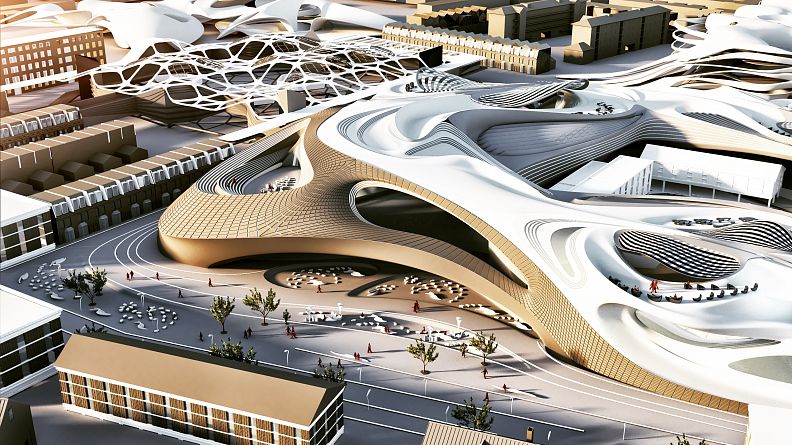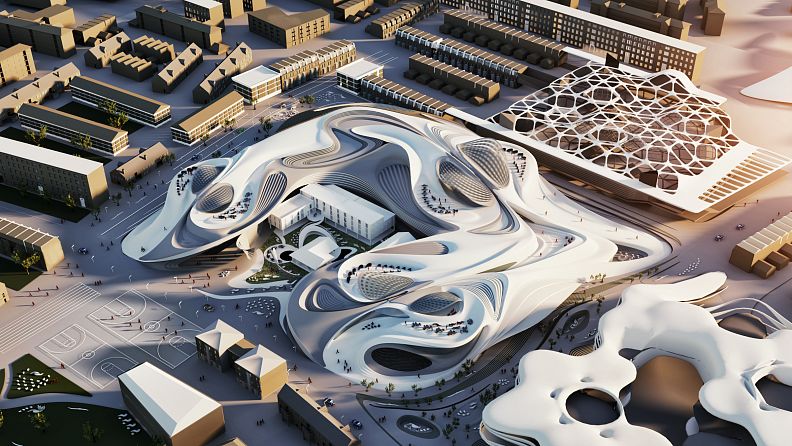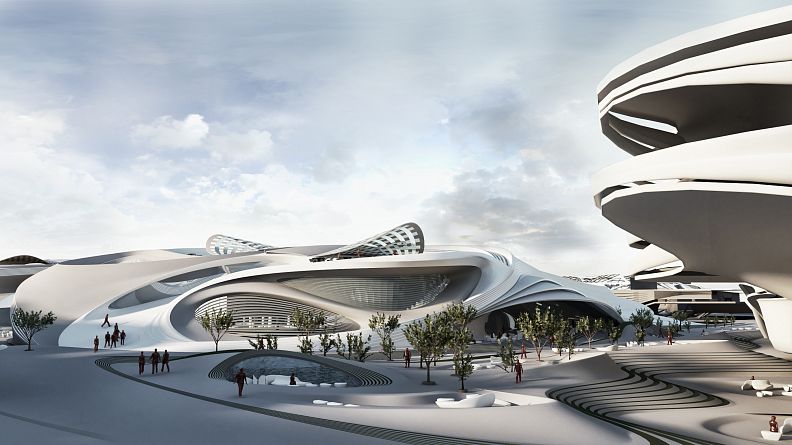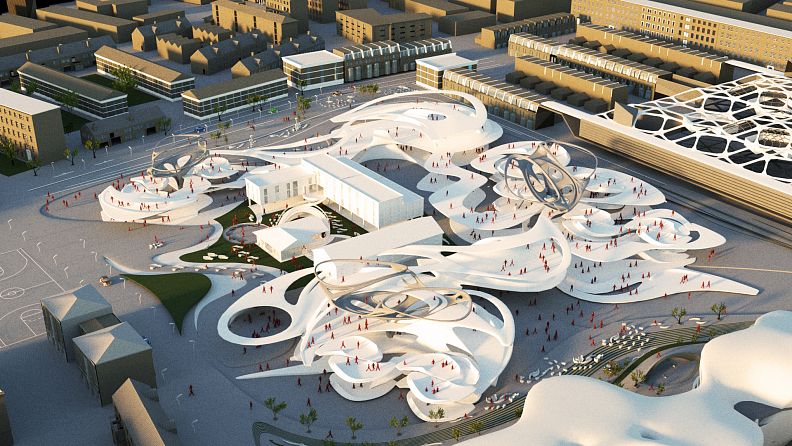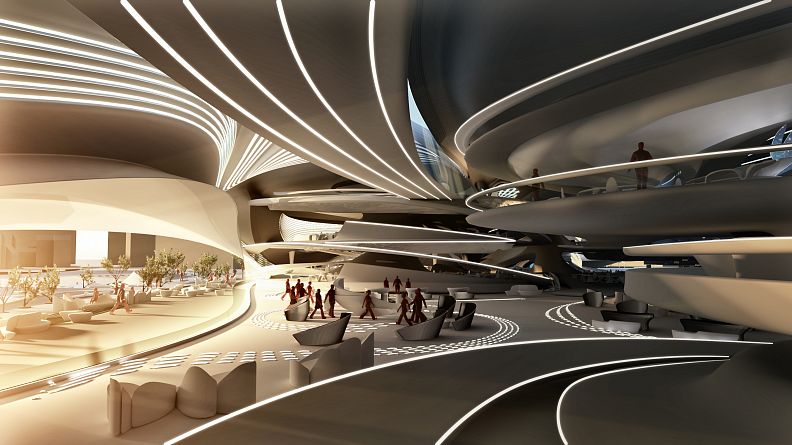Future of Work- Vortexture

Project idea
The office is no more. We work anywhere, anytime. We meet, tweet and chat in lounges, clubs, incubators, shared workspace, hot desks, cafes, cars, coffee shops, drop-down benches, skype booths, concertation rooms, and hotel lobbies.
The office building is a typology that has quite specific roots in history and is shaped by the logic of economy, technology and their contemporary culture. Today, however, work happens everywhere but the traditional office space. Our project dismisses the traditional conception of the workplace and rethinks new paradigms that bring in the “lucidifiction” of work, that is the merging of play and work. It puts forward an architecture that is agile and challenges the conventional ideas of and static typologies and organisation, an architecture that is in constant fluctuation. There is no finalised form, only an architecture in a constant process of adaptation and regeneration.
Project description
During the weekdays, the proposed office creates a user interface that is productivity-based, while in the weekends the floor plan reshuffles to encourage a creativity-based layout that allows for more communal areas and meeting zones. Likewise, during the summer the terrace merges with the landscape and is open for the neighbourhood and staff members alike to allow outdoor activities for both play and work. In the winter, when the users spend more time inside the envelope, the terrace converts into a series of skylights, letting sunlight into the building. The exciting part of this type of architecture is its capacity to generate different environments rather than one. The properties of the furniture, light, floor, ceiling, façade, canopy, terraces, and structure system change as the building changes with the hour, day, week and season, thereby offering spatially dynamic possibilities to the user.
Technical information
The design proposal is designed in a way it provides a number of outdoor activity onto the ground and the roof area. We developed different kinds of terraces to be used in the summer case scenario. A transformable roof, facade, and canopy are designed to help the navigation of the users.
As part of the Stoke Newington Campus, we are trying to create a continuous urban fabric across individual buildings. As well as we are adapting our design proposal to the surrounding neighborhood。We are using material properties, colors and different curvature as a means of design to communicate stronger with the surrounding environment. The new building incorporates and thereby transforms existing buildings and spaces into a new cluster of spaces.
Using the power of phenomenological Gestalt principles in-between spaces are activated between different projects and existing facilities. Outdoor and indoor spaces combine into a continuous sequence of social interactive zones
Different events unfold when you move around the building. This building is co affiliated from being subject from the same parameters and forces –and same field condition. there are continuous porosity and continuous connectivity but also many spaces and pauses of character distinction. Making this environment, not any statically responsible but also dynamically responsible. The landscape furniture also follows the same trajectory.
